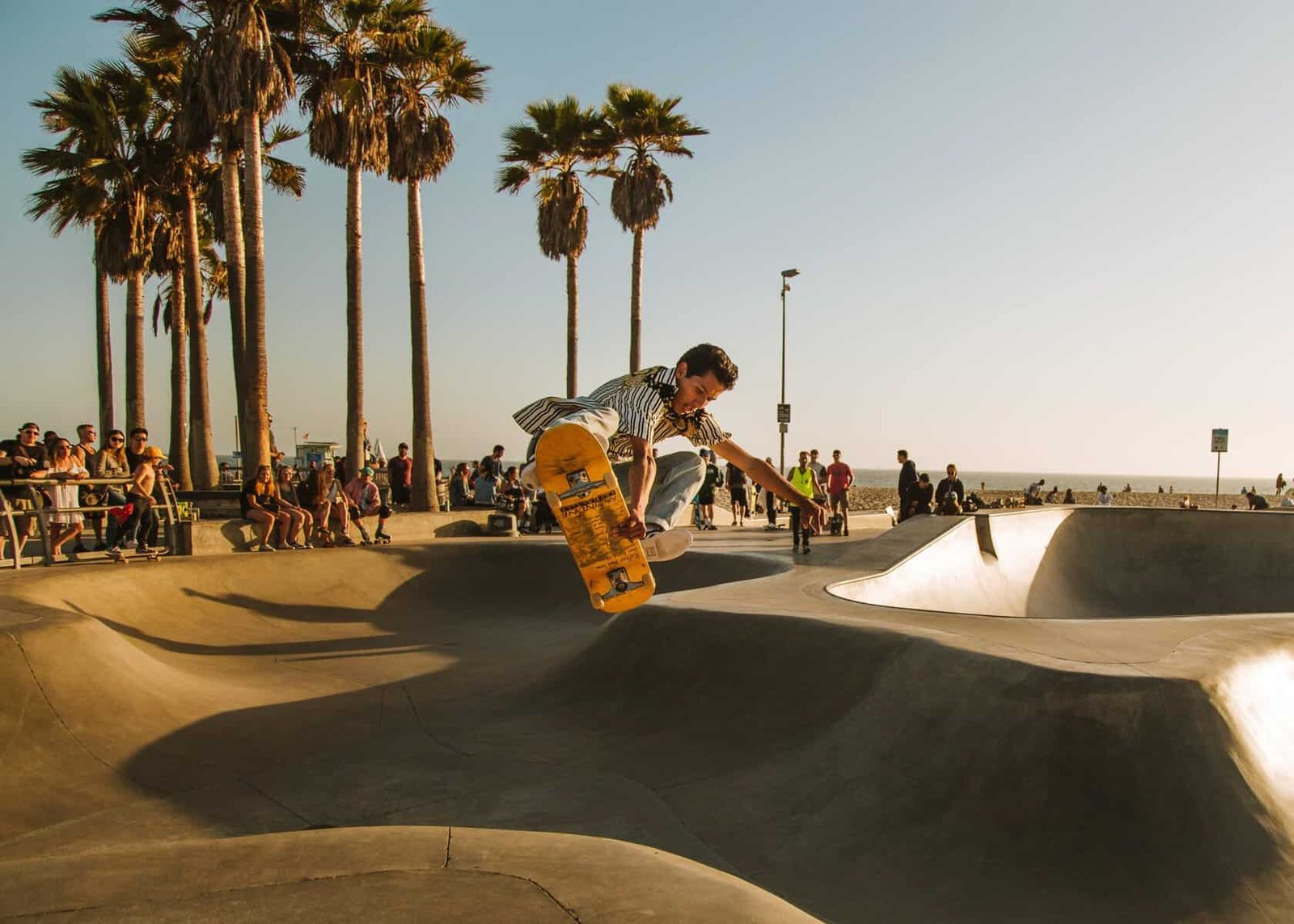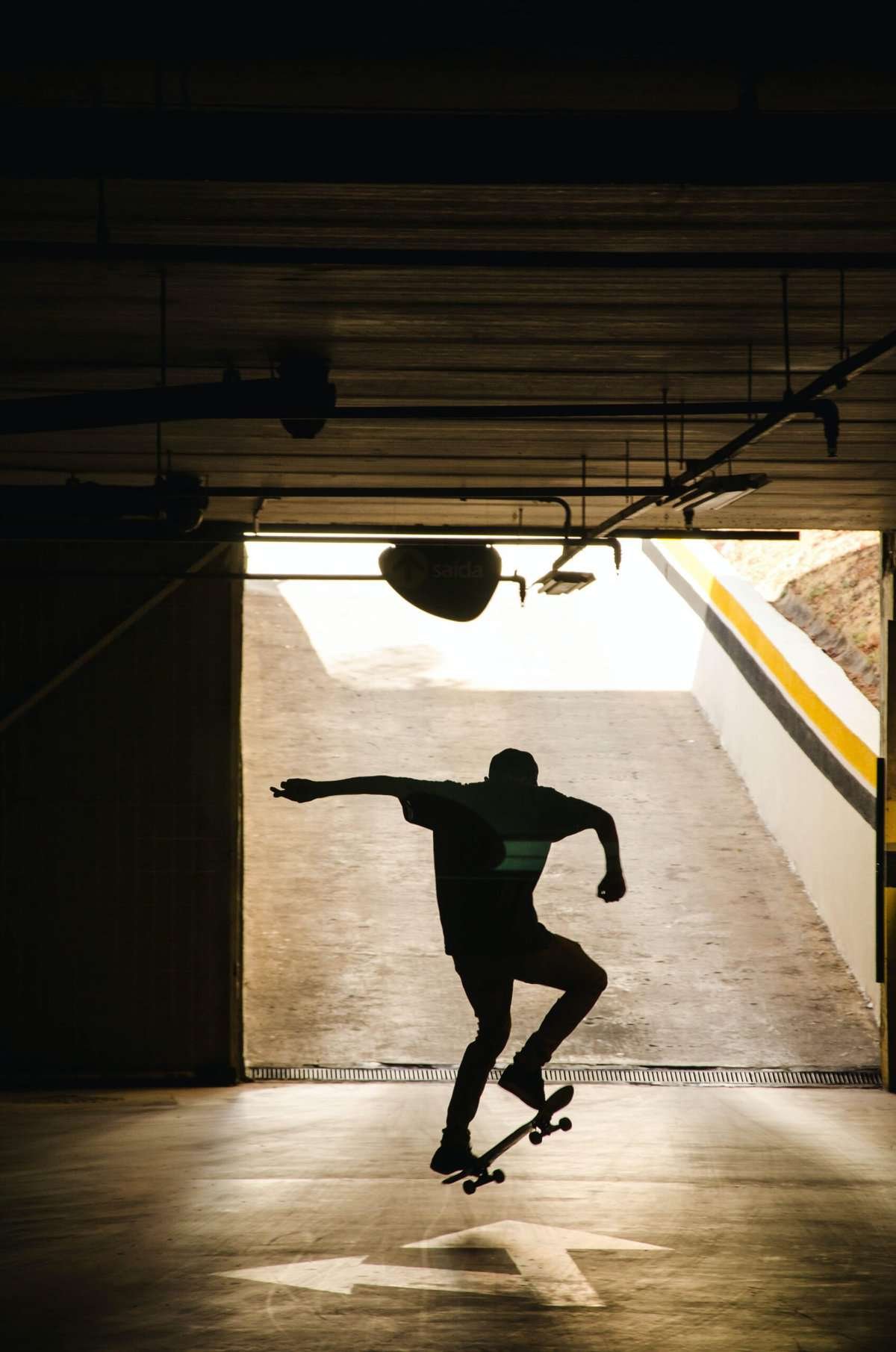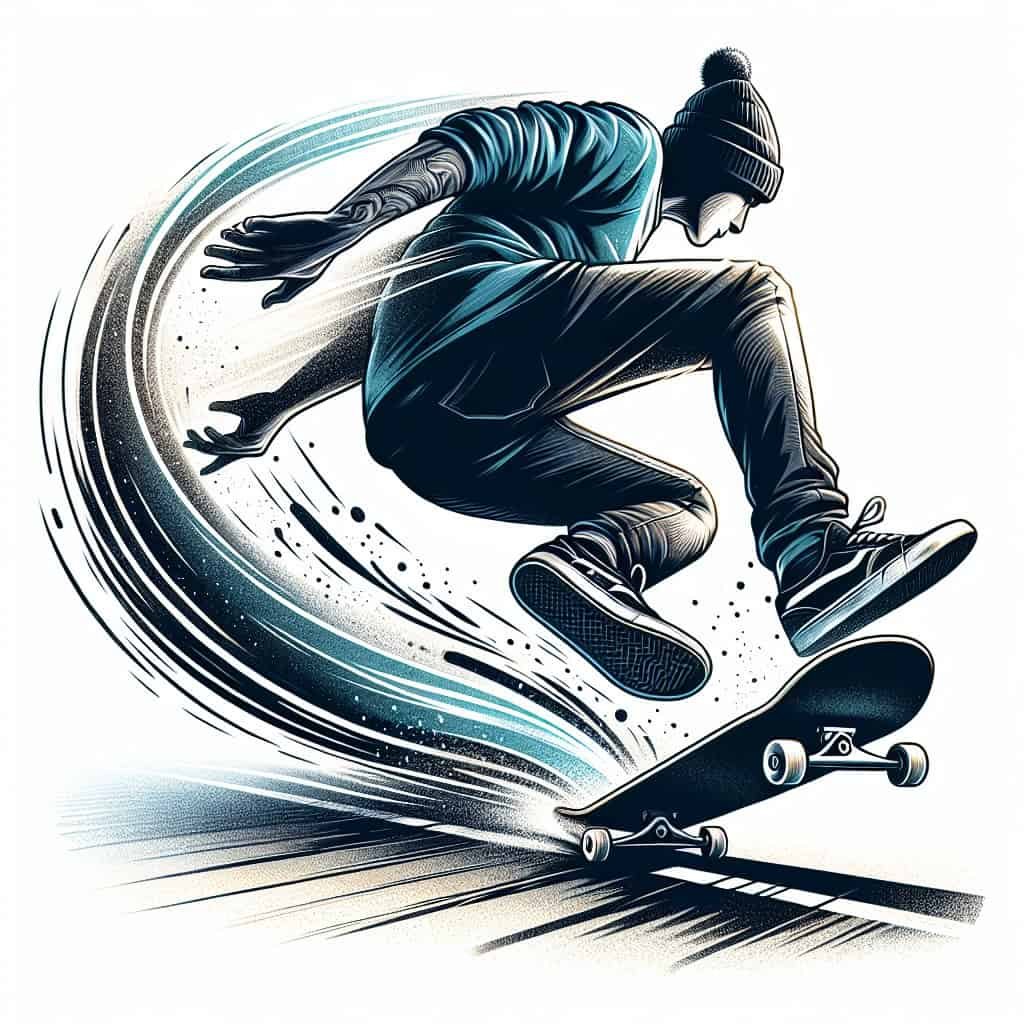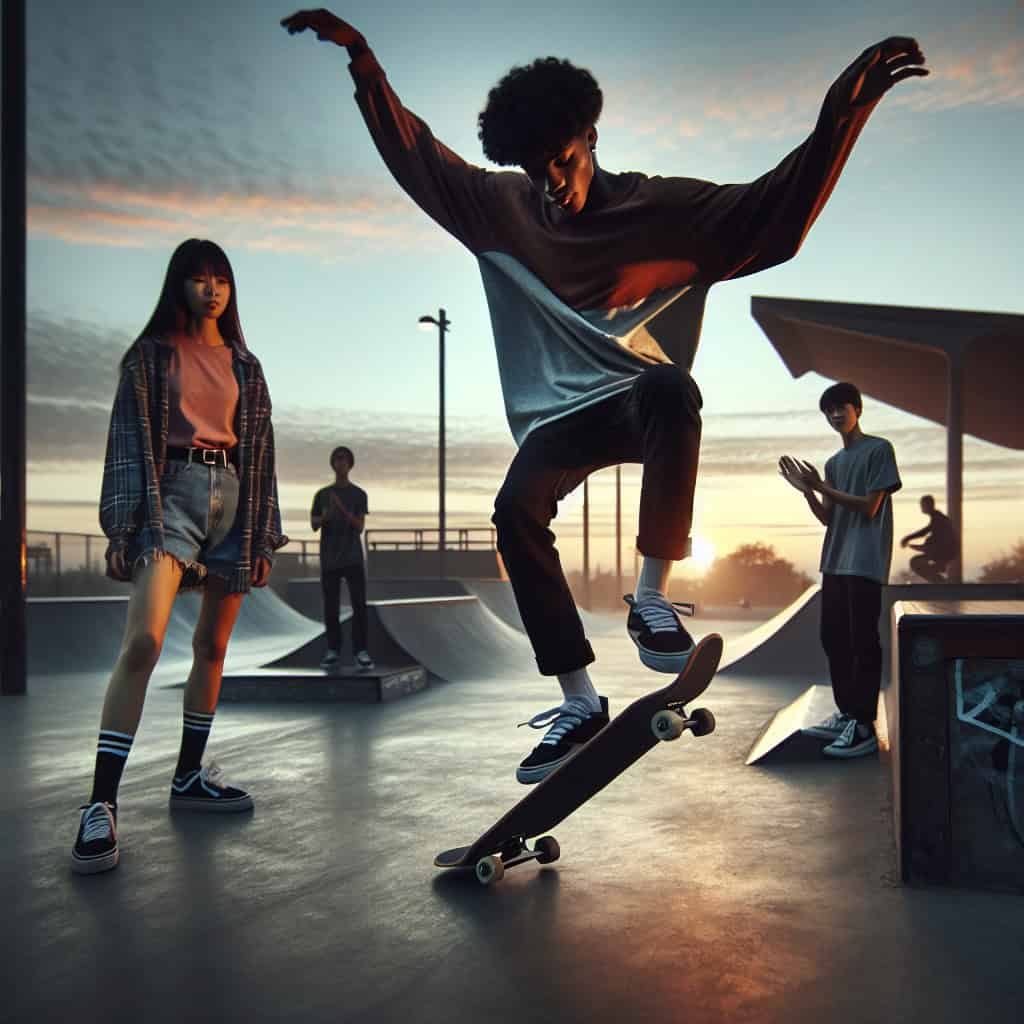You’re eager to take your skateboarding skills to the next level and master the art of revert tricks. Whether you’re a beginner or an experienced skater looking to add some flair to your repertoire, learning how to execute these tricks can be a game-changer. In this article, we will explore various tips and techniques that will help you practice skateboard revert tricks with confidence and finesse. So grab your board, put on your helmet, and get ready to level up your skateboarding game!

Skateboard Revert Tricks
Skateboard revert tricks are a fundamental part of a skateboarder’s repertoire. Reverts involve spinning the board 180 degrees while maintaining control and balance. These tricks are not only exciting to watch but also offer a great way to improve your overall skateboarding skills. Whether you’re a beginner looking to enhance your board control or an advanced skater looking to add more style to your tricks, practicing skateboard revert tricks is essential.
What are Skateboard Revert Tricks?
Revert tricks, also known as pivot tricks, are skateboarding maneuvers that involve rotating the board 180 degrees by shifting your weight and using the motion to maintain control. They are commonly used as a way to transition from one trick to another or to change direction quickly. Revert tricks can be performed in various stances, including frontside and backside, as well as regular and fakie stance.
Examples of revert tricks include the classic frontside and backside reverts, as well as variations like the 180 and 360 reverts. These tricks can be combined with other maneuvers, such as grabs or shuvits, to add more flair and personal style to your skateboarding.
Learning revert tricks can have numerous benefits for skateboarders of all skill levels. Not only do they improve your balance and coordination, but they also enhance your board control and expand your trick repertoire. Additionally, they boost your confidence and overall skill progression, making them a valuable addition to any skater’s arsenal.
Why Practice Skateboard Revert Tricks?
There are several reasons why practicing skateboard revert tricks is highly recommended for skateboarders at any level.
Improving Balance and Coordination
By practicing revert tricks, you’ll develop a better sense of balance and coordination. The act of spinning the board 180 degrees requires precise weight distribution and control. As you become more comfortable with these maneuvers, your overall balance will improve, which will benefit you when attempting other tricks or navigating different terrains.
Enhancing Board Control
Revert tricks are a great way to enhance your board control and maneuverability. These tricks require you to understand how weight shifts affect the board’s movement and how to maintain control throughout the trick. As you practice revert tricks, you’ll become more adept at manipulating the board, allowing you to execute other tricks more smoothly.
Expanding Trick Repertoire
Mastering revert tricks opens up a world of possibilities for expanding your trick repertoire. By incorporating reverts into your routine, you can seamlessly transition between tricks or change direction quickly. Whether you’re practicing at a skatepark or on the streets, having a solid foundation of revert tricks allows you to flow effortlessly from one maneuver to another.
Increasing Confidence and Skill Progression
As you progress in your skateboarding journey, confidence is key. Learning and mastering revert tricks can significantly boost your confidence, both on and off the board. With each successful revert, you’ll feel a sense of accomplishment and a desire to tackle more advanced tricks. The skills and confidence gained from practicing revert tricks will undoubtedly lead to further progression in your skateboarding abilities.
Basic Skateboarding Skills
Before delving into revert tricks, it’s essential to have a solid foundation in basic skateboarding skills. These skills lay the groundwork for executing revert tricks effectively and safely.
Stance and Foot Placement
Determining your stance, whether regular (left foot forward) or goofy (right foot forward), is crucial in skateboarding. Your front foot should be positioned at a slight angle on the front bolts of the skateboard while your back foot remains perpendicular to the board’s length.
Pushing and Riding Comfortably
The ability to push and ride comfortably is fundamental for any skateboarder. Practice pushing off with your back foot while maintaining your balance and riding with control. This skill will enable you to navigate different terrains and approach revert tricks confidently.
Turning and Carving Techniques
Turning and carving on a skateboard require the use of your body weight and foot pressure to initiate and control the turns. Practice shifting your weight and applying pressure to either the heel or toe edge of your board to make turns smoothly. Developing these techniques will enhance your ability to execute revert tricks effectively.
Familiarity with Different Terrains
As a skateboarder, you’ll encounter various terrains, such as smooth concrete or rough asphalt. Familiarize yourself with different surfaces to adapt your riding style and control accordingly. This knowledge will prove beneficial when practicing revert tricks in different environments.
Understanding Skatepark Features
Skateparks offer a wide range of features that allow skaters to showcase their skills. Take the time to study and familiarize yourself with the different elements and obstacles in a skatepark. This understanding will enhance your ability to incorporate revert tricks into your park sessions and make the most of the available features.

Choosing the Right Skateboard
Selecting the right skateboard is crucial in ensuring a successful and enjoyable skateboarding experience, particularly when it comes to practicing revert tricks.
Deck Size and Width
The size and width of the skateboard deck play a significant role in your ability to execute revert tricks comfortably. While personal preference is key, a deck size that matches your shoe size and riding style is generally recommended. A wider deck provides more stability, which can aid in maintaining balance during revert tricks.
Wheel Hardness and Size
Wheel hardness and size determine how your skateboard responds to different surfaces. Softer wheels offer more grip and control, making them suitable for revert tricks. However, if you’ll be practicing revert tricks primarily on smooth surfaces like skateparks, harder wheels may provide a better slide and release.
Truck Width and Tightness
The width and tightness of your skateboard trucks also affect your ability to perform revert tricks. Trucks that are too loose may compromise stability, while excessively tight trucks can hinder maneuverability. Finding the right balance is key, as it allows for smooth and controlled execution of revert tricks.
Grip Tape and Concave
Grip tape and concave are essential features that contribute to your board’s control and responsiveness. Make sure your grip tape is applied securely to provide optimal traction for your feet. Additionally, consider a concave shape that suits your preference and enhances your ability to execute revert tricks comfortably.
Considerations for Revert Tricks
When choosing a skateboard for practicing revert tricks, keep in mind that stability and control are essential. Opt for a setup that provides adequate stability for confident execution of reverts, while still allowing for maneuverability and adaptability to different terrains.
Safety Gear and Equipment
Skateboarding, like any other action sport, comes with certain risks. Protecting yourself with appropriate safety gear is crucial to ensure your well-being while practicing revert tricks.
Helmet
Wearing a helmet is essential to protect your head from potential injuries. Look for a skateboarding-specific helmet that fits securely and meets safety standards. Remember, your helmet should be properly fastened and snug on your head.
Knee and Elbow Pads
Knee and elbow pads offer crucial protection for your joints in case of falls or collisions. Invest in pads that provide sufficient cushioning and coverage to minimize the risk of injury. Properly fitted pads will allow you to skate with confidence, knowing that you have added protection.
Wrist Guards
To protect your wrists from sprains or fractures, consider wearing wrist guards. These guards provide support and stabilization, reducing the likelihood of wrist injuries during falls or high-impact maneuvers like revert tricks.
Appropriate Shoes
Skateboarding requires proper footwear that offers support, grip, and flexibility. Look for skate shoes with sturdy construction, grippy outsoles, and reinforced areas for durability. Wearing shoes specifically designed for skateboarding will enhance your performance and reduce the risk of foot-related injuries.
Clothing and Protective Gear
Wearing appropriate clothing is essential for skateboarding safety. Choose comfortable, breathable clothes that do not hinder your movement. Long pants can offer additional protection against scrapes and abrasions. Additionally, consider wearing wristbands or compression sleeves for added support or protection.

Finding a Suitable Practice Area
When it comes to practicing revert tricks, a suitable practice area is crucial for your safety and progress. Look for locations that offer a smooth and open space without obstruction or hazards.
Local Skateparks
Skateparks provide a controlled and purpose-built environment for practicing revert tricks. Look for skateparks in your area that cater to your skill level. These parks typically feature ramps, rails, and other skateboarding obstacles to enhance your training experience.
Empty Parking Lots
Empty parking lots offer ample space for practicing revert tricks without the constraints of skatepark features. Ensure that the surface is smooth and free of debris or obstacles that could impede your maneuvers. Always seek permission or verify that skating is allowed in the parking lot before using it.
Smooth Sidewalks
Sidewalks with a smooth surface can serve as a convenient practice area for revert tricks. Choose sidewalks with minimal cracks and uneven surfaces to avoid potential obstacles or hazards. Be mindful of pedestrians and always skate responsibly.
Open Flat Areas
Open flat areas, such as basketball courts or open plazas, provide plenty of space to practice revert tricks. These areas allow you to focus solely on your maneuvers without the constraints of skatepark obstacles. Ensure the surface is smooth and suitable for skateboarding.
Avoiding Crowded or Hazardous Locations
When searching for a practice area, it’s essential to avoid crowded or hazardous locations. Not only can overcrowded areas be distracting, but they also increase the likelihood of collisions or accidents. Similarly, hazardous areas with uneven surfaces, potholes, or obstacles can pose significant risks. Your safety should always be a priority when practicing revert tricks.
Warming Up Before Practicing
Before diving into revert tricks, it’s important to warm up your body to prevent injuries and improve performance. A proper warm-up routine prepares your muscles and joints for the physical demands of skateboarding.
Stretching Exercises
Incorporate stretching exercises into your warm-up routine to increase flexibility and prevent muscle strains. Focus on stretching major muscle groups, including your legs, arms, back, and neck. Hold each stretch for 15 to 30 seconds without bouncing, and remember to breathe deeply during each stretch.
Pre-skate Cardiovascular Activity
Performing a short cardio session before skating helps increase blood flow and raises your heart rate. Engage in activities such as jogging, cycling, or jumping jacks to get your body warmed up and ready for action. Aim for around 10 minutes of moderate-intensity cardio activity.
Board Balance Drills
To improve your balance and stability on the board, incorporate board balance drills into your warm-up routine. Stand on the skateboard with your feet shoulder-width apart and practice shifting your weight from side to side and front to back. This exercise will help activate the muscles and neural pathways necessary for revert tricks.
Mobility and Flexibility Exercises
Skateboarding requires a combination of mobility and flexibility. Perform exercises that target your joints’ range of motion, such as leg swings, ankle circles, and arm circles. These exercises prepare your body for the dynamic movements involved in revert tricks.
Safety Precautions
While warming up, always be aware of your surroundings and practice in a safe and open area. Stay hydrated, especially in warmer weather, and listen to your body. If you experience any pain or discomfort during the warm-up, take a break and assess the situation before proceeding. Remember, warming up is crucial for injury prevention and optimal performance.

Starting with the Basics
To master revert tricks, it’s important to start with the basics and gradually progress towards more advanced variations. Building a solid foundation will ensure that you understand the mechanics of revert tricks and develop the necessary muscle memory.
Frontside and Backside Reverts
Begin by practicing frontside and backside reverts on a flat surface. A frontside revert involves rotating the board in the same direction as your toes, while a backside revert involves rotating in the opposite direction. Focus on shifting your weight and using your hips to initiate the rotation while keeping your upper body stable.
Regular and Fakie Stance Reverts
Once you’ve become comfortable with frontside and backside reverts, incorporate regular and fakie stance into your practice. In regular stance, your leading foot is positioned at the front of the board, while in fakie stance, your leading foot is positioned at the back. Practice reverts in both stances to improve your versatility and adaptability in various skateboarding situations.
Practicing on a Flat Surface
To develop the proper mechanics and control for revert tricks, start by practicing on a flat surface. This allows you to focus solely on the motion and weight distribution required for the trick. As you become more proficient, you can gradually progress to incorporating reverts into transitions and obstacle-based tricks.
Understanding Weight Distribution
Throughout the execution of revert tricks, weight distribution is crucial for maintaining balance and control. Practice shifting your weight between your front and back foot to initiate the rotation. Understanding how different weight distributions affect the board’s movement will enable you to execute revert tricks smoothly and with greater precision.
Developing Muscle Memory
Like any skateboarding trick, revert tricks require consistent practice to develop muscle memory. Repetition is key to train your body to perform the motion automatically and instinctively. As you practice revert tricks regularly, you’ll notice improvements in your execution, control, and overall confidence.
Adding Variations and Style
Once you’ve mastered the basics of revert tricks, it’s time to explore variations and add your personal style to these maneuvers. Adding variations and style not only enhances the overall aesthetic of your skateboarding but also challenges you to push your skills further.
Combining Reverts with Other Tricks
One way to add flair to your revert tricks is to combine them with other tricks. Experiment with incorporating grabs, such as a Melon or Indy grab, into your reverts. This adds another layer of complexity and style to your tricks, making your skateboarding stand out.
Experimenting with Different Heights
Take your revert tricks to new heights by experimenting with different heights and elevations. Instead of executing reverts on a flat surface, try performing them on ramps, banks, or transition features. Launching off a quarterpipe or over a ramp will elevate your revert tricks and challenge your aerial control.
Exploring 180 and 360 Reverts
Once you’re comfortable with 180-degree reverts, challenge yourself by exploring 360-degree reverts. This rotation requires a higher level of balance and coordination but offers a rewarding experience once mastered. Experiment with both frontside and backside variations to expand your trick repertoire further.
Incorporating Grab Tricks or Shuvits
To add even more style and creativity to your revert tricks, consider incorporating grab tricks or shuvits. Grab tricks involve grabbing the skateboard while performing the revert, adding a stylish element to the trick. Shuvits can be incorporated by initiating a pop shuvit or kickflip shuvit motion before executing the revert, creating a unique combination of tricks.
Finding Personal Expression
As you progress in your skateboarding journey, finding your personal expression on the board becomes increasingly important. Use revert tricks as a canvas to express your style, creativity, and unique approach to skateboarding. Incorporate your own techniques, body movements, or even dance elements into your revert tricks, allowing each trick to be a reflection of your individuality.
In conclusion, skateboard revert tricks are a fascinating aspect of skateboarding that not only enhance your skills but also add excitement and style to your riding. By practicing revert tricks, you improve your balance, coordination, and board control while expanding your trick repertoire. Remember to start with the basics, gradually progress, and always prioritize safety by wearing appropriate protective gear. Whether you’re a beginner or an experienced skater, revert tricks offer endless possibilities for creativity, self-expression, and enjoyment on your skateboard. So get out there, have fun, and let your revert tricks shine!

